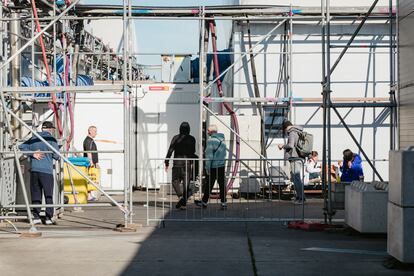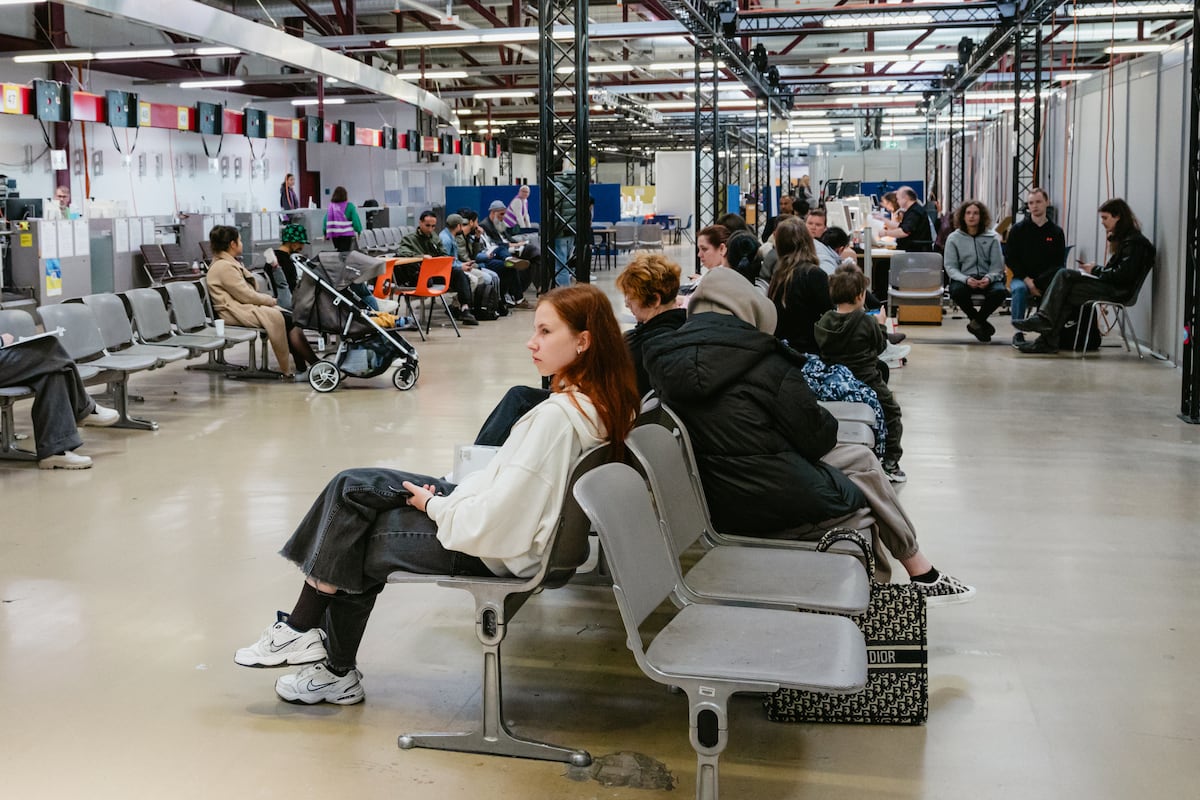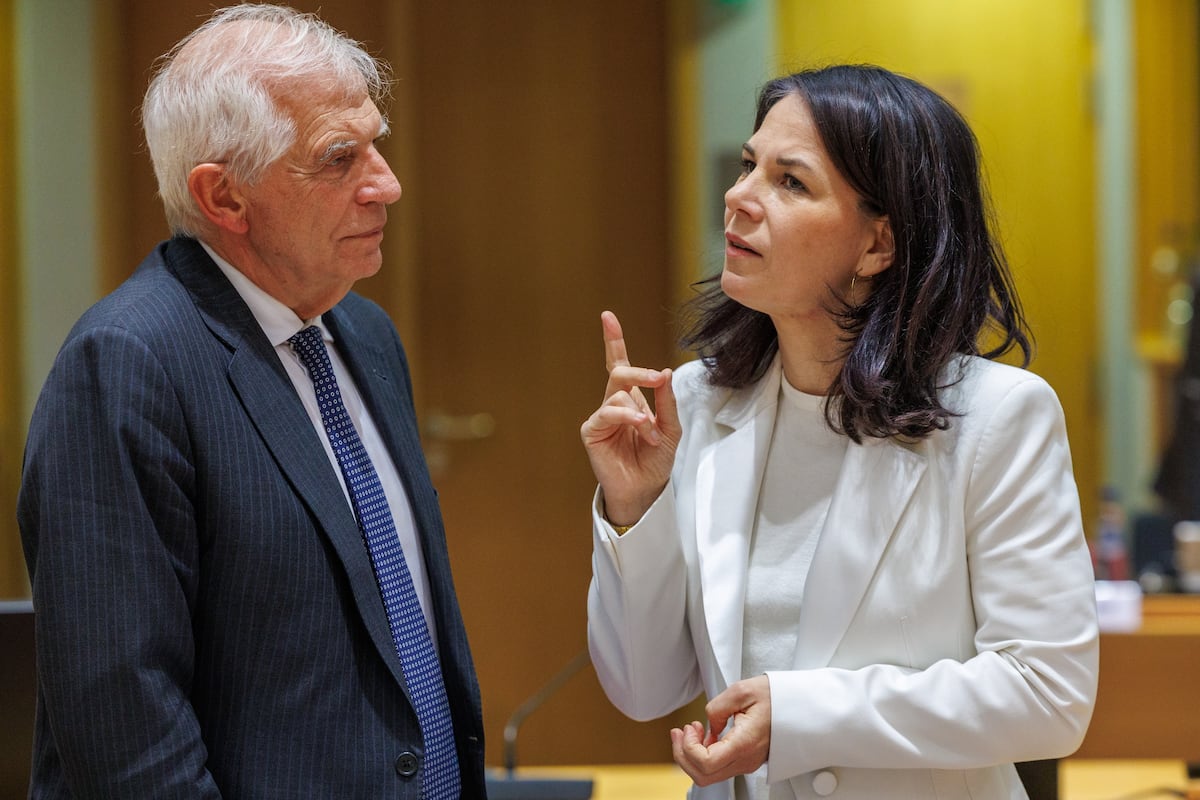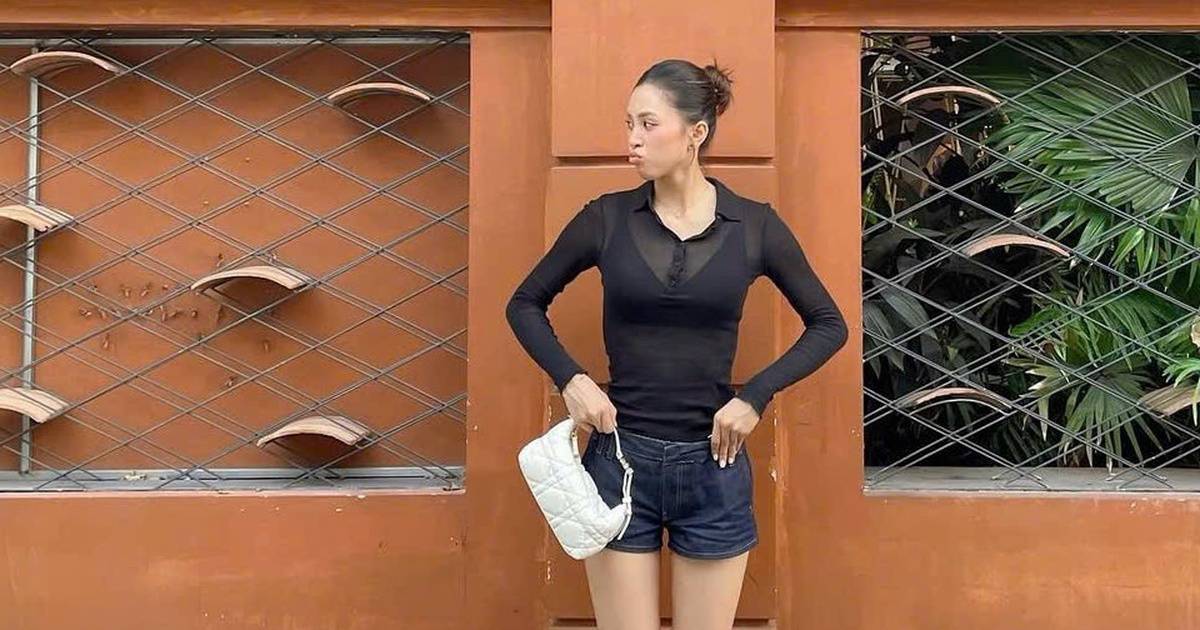“I’ve been trying for months to get an apartment so I can leave here with my family,” laments Viktor Olug, leaning on his cane in one of the 27 temporary warehouses erected near the old terminal C of Tegel airport, in the north of Berlin. His eyes ooze sadness. While showing his two scars on his neck, he says that he has suffered five strokes, two in Berlin and three in Ukraine. “I need peace of mind. There is a lot of noise here,” he complains. Olug, 69, arrived from Ukraine with his son, daughter-in-law and three grandchildren. “It will be two years in December.”
Olug’s eternal wait is not an isolated case. It is the most common criticism heard in this refugee reception center, which, with 4,677 people, according to data from the Berlin State Refugee Office (LAF), is the most populated in the European Union. Many people repeat the rumor that someone got an apartment after waiting only a month, while they are still trapped in that kind of black hole. However, a rumor is usually just that: a rumor. The reality is the average wait time is 285 days. The eternal bureaucracy and lack of accommodation prevent their departure. Once you get in, it is very difficult to get out.
“They told me that I could work and live here, but when I arrived it wasn’t like that. “I feel cheated,” complains Lilia Kopylenko, an energetic 58-year-old woman from Dnipropetrovsk, central Ukraine, who cooks outside the premises on a nearby river every day after falling ill with gastroenteritis in the first few days. “I don’t want to be here. Sometimes everything is very dirty and the food is horrible,” he details. Kopylenko, who has two children in Ukraine, arrived alone in Berlin a year and seven months ago. “I came to work. “I didn’t think I was going to be stuck here,” she says.
Henadii Schevchenko left Kharkiv with his brother, who is in a wheelchair, but they were separated at the Polish border due to a problem with their papers. His brother ended up in a center in southern Germany and he in Tegel. He has been here for 11 months and since then he has tried to reunite with his brother to help him. “They don’t let me go, or him come. It would be easier to look for an apartment for two, but it is not possible. “I’m trapped in an endless circle,” he says from his bed.
Their day begins at six in the morning, when the lights come on. “I get up, have breakfast, do my German homework and from 1:00 p.m. to 5:00 p.m. I’ve been going to German class for a month. Then, I come back, take a shower and lie back in bed,” he says about his daily life until the lights go out at ten. His life as a children’s teacher in Ukraine is far away.
Despite its size, Tegel is barely known outside of Germany. According to UNHCR, the Moria camp on Lesvos once housed 20,000 people, but now there are just over 1,400 people there. “Meanwhile, the facilities in Samos (3,768) and Leros (2,109) are now larger, but do not have the 5,000 places in Tegel,” indicates a spokesperson.
Tegel, built in 1948 in the former French sector to face the Soviet blockade of the city after World War II, closed in November 2020. In March 2022, the suitcases returned to one of its terminals, but this time at the hands of thousands of Ukrainians. “In November 2022, Berlin’s capacities were overwhelmed and tents were erected to house them,” explains Sascha Langenbach, press officer of the LAF. “It is very, very hard to live here, but it is better here than under a bridge,” he adds about facilities initially designed for refugees to spend only a couple of days.
A shuttle bus links the nearest transport stops to the refugee centre. Several security people receive the asylum seekers to enter through the door enabled in Terminal C. Once inside, they must pass a security check to detect objects such as knives and gas stoves or similar devices that could start a fire, such as It happened last March when a tent burned. Next, if they are already registered, they will only have to scan their QR code at the next control – a code that is also scanned when leaving. Otherwise, they must sit in the waiting room so that the authorities can take their personal and biometric data.
The old terminal signs are interspersed with information in numerous languages and the check-in counters are information stands. The feeling of temporality and improvisation permeates everything. Nadiia, a 78-year-old woman from the Ukrainian city of Kharkiv, has come with her two grandchildren to register. She is one of the lucky ones. After giving your details, you will go to live with them in their apartment in the south of Berlin.
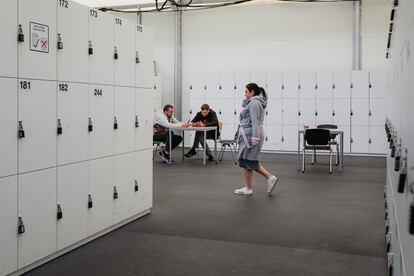
Those who are not as lucky as Nadiia are assigned to a specific bed. If they do not come to sleep two nights in a row, they lose their place. In Terminal C itself there is space for 900 people. Outside, the huge white ships follow one another on the asphalt, as do the cables, scaffolding and fences. The pavilions are accessed through a control that scans the QR code again and leads to a common area where there is a canteen, lockers, as well as a room with hygiene items. A hallway at the end connects this part with the bedrooms located to the right and left.
Each area with capacity for 350 people has rows of rooms where behind a curtain an average of 10 people sleep in bunk beds with personal belongings piled on top of the mattresses, with no privacy and almost no space. Some are only for women, others for men or families, but sometimes they are mixed.

A petite woman waits patiently in the hallway. Ludmila Sahovora’s gaze reveals the horrors experienced in the war. He’s been there for almost two years. “My husband died in the war. A missile hit me while I was working and I have had medical consequences since then,” details the 67-year-old woman.
She is one of 3,639 refugees from Ukraine residing in Tegel. In addition, there are 1,038 from other countries, mainly Syria, Afghanistan, Türkiye, Moldova and Vietnam. There is room for another almost 2,000 more people. Along with the refugees there are 455 NGO people, 150 catering people and 500 security people divided into two 12-hour shifts. “All this is very expensive. Tegel alone costs 35 million euros per month,” reports the press officer. This means more than 7,000 euros per month per refugee, a cost used as ammunition by the German extreme right to attack the Government.
The LAF refugee office is responsible for housing them, but has awarded management to the German Red Cross. In turn, it has entrusted some tasks to aid organizations such as Malteser. Security is in the hands of the Messe Berlin, a state company specialized in congresses. In addition, you must add the rental of the venue and the tents, cleaning, water, electricity and heating.
The facilities have, among other things, a clinic with two doctors and a pediatrician, as well as a free time area where four children do crafts, one teenager plays the piano and another plays with wooden blocks. Children under seven years old must be accompanied by their parents. Taking advantage of the sunny day, many prefer to ride their scooters along the old landing and take-off strips. In the background, in a hair salon, a young Afghan trims his beard, while Ibrahim – who was a hairdresser in Syria – cuts his friend Mohammed’s hair.

In that same pavilion is the study area where there are several people with their laptops. Like Charles Finney, a Ukrainian born in Texas 59 years ago. During his work as a paramedic in Ukraine, his foot froze and he was taken to Berlin for surgery. Four fingers were amputated. He tried to look for an apartment, but spent four months living illegally in a basement, so he returned to Tegel, where he has been for a year. Meanwhile, he works on applications with artificial intelligence from his computer. “Life is a sinking ship, but you have to keep rowing,” he explains in perfect German thanks to his studies in Vienna. “Tegel is a parallel world,” he acknowledges about what it is like to live there.
At his side is Jenyd Toma, 21, who arrived four months ago fleeing the war. “I spent two years and seven months in the army. They let me leave to accompany my mother to Türkiye to receive medical treatment because she is very sick,” he says in English. “It is very difficult to leave the army. But if you give money or with a special permit you can leave the country and the army,” he explains. From Istanbul he fled to Berlin. “If I come back I have to go to the army again.” “It’s like Balenciaga. “He has a brand in Ukraine,” says Finney about the young man, who had a clothing store in Ukraine and dreams of opening one in Berlin.
At the exit of that pavilion it is already time to eat. In the canteen of one of the ships, Hamza serves food to the few present. “It’s chili without meat,” he reports. “This is ketchup. You can’t eat it,” criticizes Vasyl Rusnak, a teacher who arrived a year and a half ago with his son from Chernivtsi. “I don’t understand why I’m still here. “I do everything they tell me,” he laments about a life that despite everything continues in this place.
